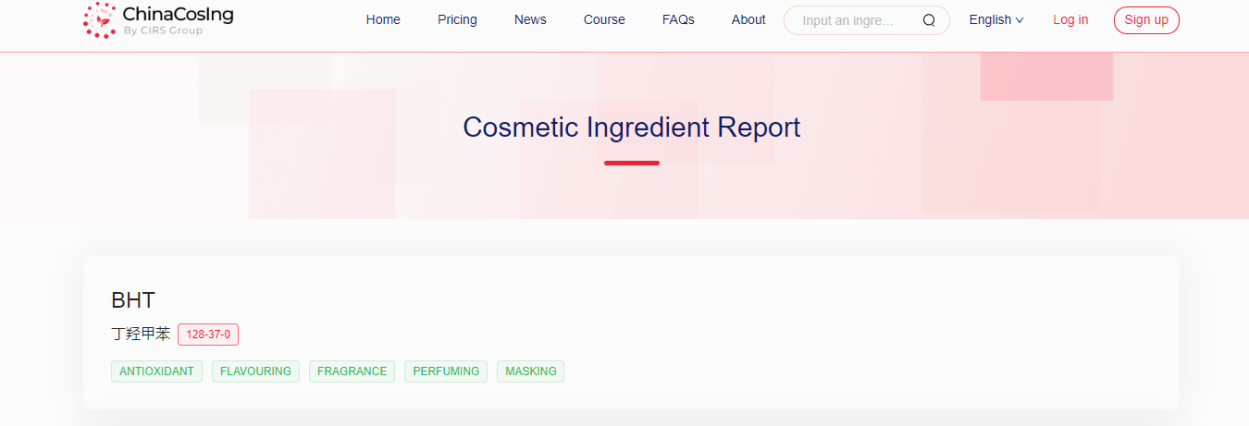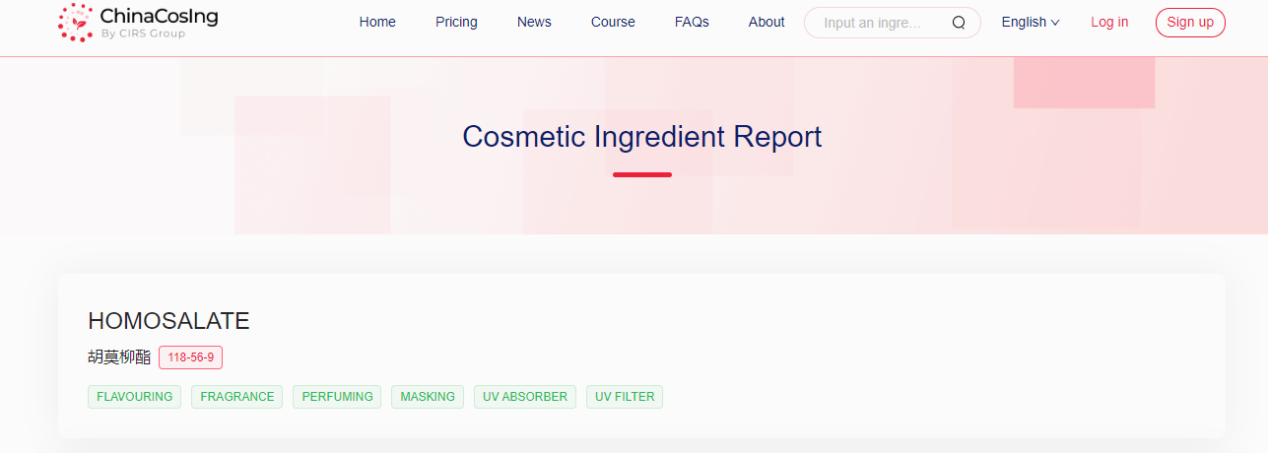On December 30, 2024, Malaysia’s National Pharmaceutical Regulatory Agency (NPRA) revised the Guidelines for Control of Cosmetic Products in Malaysia. The revisions were issued as Circular 3/2024 and took effect immediately upon publication.
The revisions followed the 40th ASEAN Cosmetic Committee (ACC) meeting held in Bangkok, Thailand on November 21-22, 2024. During the meeting amendments were made to Annex I (List of Prohibited Substances), Annex III (List of Restricted Substances), and Annex VII (List of Permitted UV Filters) of the ASEAN Cosmetic Directive (ACD).
The ACD is an agreement among ASEAN countries to harmonize the requirements of cosmetic products to reduce technical barriers to trade in the region.
Regulatory Amendments
The key amendments include:
Adding 28 substances to Annex I (List of Prohibited Substances in Cosmetics). Details are provided in the table below. The transition period extends until November 19, 2026.
Substances | CAS No. | Ref No. |
Theophylline; 1,3-dimethyl-3,7-dihydro-1H-purine-2,6-dione | 58-55-9 | A1137 |
Barium salts and Barium Peroxide, with the exception of barium sulfide under the condition laid down in Annex III part 1 reference #23, and the barium sulfate, lakes, salts, and pigments prepared from coloring agents listed in Annex IV | 7440-39-3 | 46 |
Ammonium bromide | 12124-97-9 | 1695 |
Dibutyltin bis(2-ethylhexanoate) | 2781-10-4 | 1696 |
Dibutyltin di(acetate) | 1067-33-0 | 1697 |
Tellurium dioxide | 7446-07-3 | 1698 |
Barium diboron tetraoxide | 13701-59-2 | 1699 |
2,2-dimethylpropan-1-ol,tribromo derivative; 3-bromo-2,2- bis(bromomethyl)propan-1-ol | 36483-57-5/1522-92-5 | 1700 |
2,4,6-tri-tert-butylphenol | 732-26-3 | 1701 |
4,4'-sulphonyldiphenol;bisphenol S | 80-09-1 | 1702 |
Benzophenone | 119-61-9 | 1703 |
Quinoclamine(ISO); 2-amino-3-chloro-1,4-naphthoquinone | 2797-51-5 | 1704 |
Perfluoroheptanoic acid; tridecafluoroheptanoic acid | 375-85-9 | 1705 |
Methy l N-(isopropoxycarbonyl)-L-valyl-(3RS)- 3-(4-chlorophenyl)-β-alaninate; valifenalate | 283159-90-0 | 1706 |
6-[C12-18-alkyl-(branched,unsaturated)-2,5-dioxopyrrolidin-1-yl]hexanoic acid, sodium and tris(2-hydroxyethyl)ammonium salts | - | 1707 |
6-[(C10-C13)-alkyl-(branched,unsaturated)-2,5-dioxopyrrolidin-1-yl]hexanoic acid | 2156592-54-8 | 1708 |
Bentazone(ISO); 3-isopropyl-2,1,3-benzothiadiazine-4-one-2,2-dioxide | - | 1709 |
1,3,5-triazine-2,4,6-triamine;melamine | 108-78-1 | 1710 |
Fluopicolide(ISO); 2,6-dichloro-N-[3-chloro-5-(trifluoromethyl)-2-pyridylmethyl]benzamide | 607-285-6 | 1711 |
N-(2-nitrophenyl)phosphoric triamide | 874819-71-3 | 1712 |
N-(5-chloro-2-isopropylbenzyl)-N-cyclopropyl-3-(difluoromethyl)-5-fluoro-1-methyl-1H-pyrazole-4-carboxamide;isoflucypram | 1255734-28-1 | 1713 |
Reaction mass of 3-(difluoromethyl)-1-methyl-N-[(1RS,4SR,9RS)-1,2,3,4-tetrahydro-9-isopropyl-1,4-methanonaphthalen-5-yl]pyrazole-4-carboxamide and 3-(difluoromethyl)-1-methyl-N-[(1RS,4SR,9SR)-1,2,3,4-tetrahydro-9-isopropyl-1,4-methanonaphthalen-5-yl]pyrazole-4-carboxamide[≥78%syn isomers≤15%anti isomers relative content]; isopyrazam | 881685-58-1 | 1714 |
Cumene | 98-82-8 | 1715 |
Pentapotassium2,2',2",2",2"-(ethane-1,2-diylnitrilo) pentaacetate | 7216-95-7 | 1716 |
N-carboxymethyliminobis(ethylenenitrilo)tetra(acetic acid); Pentetic Acid (INCI) | 67-43-6 | 1717 |
Acetamiprid(ISO); (1E)-N-[(6-chloropyridin-3-yl)methyl]-N'-cyano-N-methylethanimidamide; (E)-N1-[(6-chloro-3-pyridyl)methyl]-N2-cyano-N1- methylacetamidine | 135410-20-7/160430-64-8 | 1718 |
Pendimethalin(ISO); N-(1-ethylpropyl)-2,6-dinitro-3,4-xylidene | 40487-42-1 | 1719 |
Bentazone(ISO); 3-isopropyl-2,1,3-benzothiadiazine-4-one-2,2-dioxide | 25057-89-0 | 1720 |
(*Note: The content displayed in the CAS No. column may refer to EC numbers)
Amendments to Annex III (List of Restricted Substances in Cosmetics) include additional restrictions on Butylated Hydroxytoluene, with specific requirements outlined below.
Ref No ACD # | Substance/CAS No | Restrictions | Conditions of use and warning which must be printed on the labels | ||
Field of application and/or use | Maximum authorized concentration in the ready for use preparation | Other limitations and requirements | |||
A | B | C | D | E | F |
342 | 2,6-Di-Tert-Butyl-4-Methylphenoi | a)Mouthwash b)Toothpaste c)Other leave-on and rinse-off products | a)0.001% b)0.1% c)1% | ||
Amendments to Annex VII (List of Permitted UV Filters in Cosmetics) include updated usage requirements for Homosalate, with a maximum allowed concentration of 7.34%, aligning with the requirements of the EU Cosmetics Regulation.
Ref No. | Substance | Maximum authorized concentration | Other limitations and requirements | Conditions of use and warnings which must be printed on the label |
3 | Homosalate | 7.34% | Face products with the exception of propellent spray products |
Interpretation of Butylated Hydroxytoluene and Homosalate
Butylated Hydroxytoluene
Under China Cosmetic Regulations
The Chinese Cosmetic Ingredient Regulatory Database (ChinaCosIng), independently developed by CIRS Group, indicates that Butylated Hydroxytoluene (CAS No. 128-37-0), used as an antioxidant, flavoring, fragrance, perfuming, or masking in cosmetics.

Butylated Hydroxytoluene has been included in the Inventory of Existing Cosmetic Ingredients in China (IECIC 2021) with the maximum historical usage in leave-on cosmetic products of 2.6% and the Inventory of Existing Toothpaste Ingredients in China (China Oral Care Industry Association), with the maximum historical usage of 0.03%.

Under International Cosmetic Regulations
According to the Global Cosmetic Ingredient Regulatory Database (Global CosIng), independently developed by CIRS Group, the EU has set usage requirements on Butylated Hydroxytoluene.
Note: The Global CosIng is currently only available in Chinese
List Item | 100318# 2,6-Di-Tert-Butyl-4-Methylphenol |
Product Type Body Parts | (a) Mouthwash (b) Toothpaste (c) Other leave-on and rinse-off products |
Maximum Concentration | (a) 0.001% (b) 0.1% (c) 0.8% |
Other | From July 1, 2023, cosmetic products containing that substance and not complying with the restrictions shall not be placed on the Union market. |
Homosalate
Under Chinese Cosmetic Regulations
ChinaCosIng, indicates that Homosalate (CAS No. 118-56-9) can be used as flavoring, fragrance, perfuming, masking, UV absorber, or UV filter in cosmetics.

Homosalate has been included in the Inventory of Existing Cosmetic Ingredients in China (IECIC 2021) and the List of Allowed Sunscreen Agents with the maximum allowable concentration when used in cosmetics of 10%.


Under International Cosmetic Regulations
According to Global CosIng the following table outlines the usage requirements for Homosalate as specified in the EU Cosmetics Ingredients Database (EU-CosIng).
List Item | 28808# Benzoic acid, 2-hydroxy-, 3,3,5-trimethylcyclohexyl ester / Homosalate |
Product Type Body Parts | Face products with the exception of propellent spray products |
Maximum Concentration | 7.34% |
Other | From January 1, 2025, cosmetic products containing that substance and not complying with the conditions shall not be placed on the Union market. From July 1, 2025, cosmetic products containing that substance and not complying with the conditions shall not be made available on the Union market. |
Further Information
If you need any assistance or have any questions, please get in touch with us via cosmetic@cirs-group.com.
Our Malaysian Cosmetics Compliance Services
- Malaysia Authorized Holder Services;
- Malaysia Cosmetics Notification;
- Malaysia Formula and Packaging Label Review;
- Malaysia Product Information File (PIF) Preparation; and
- Product Testing Services.

